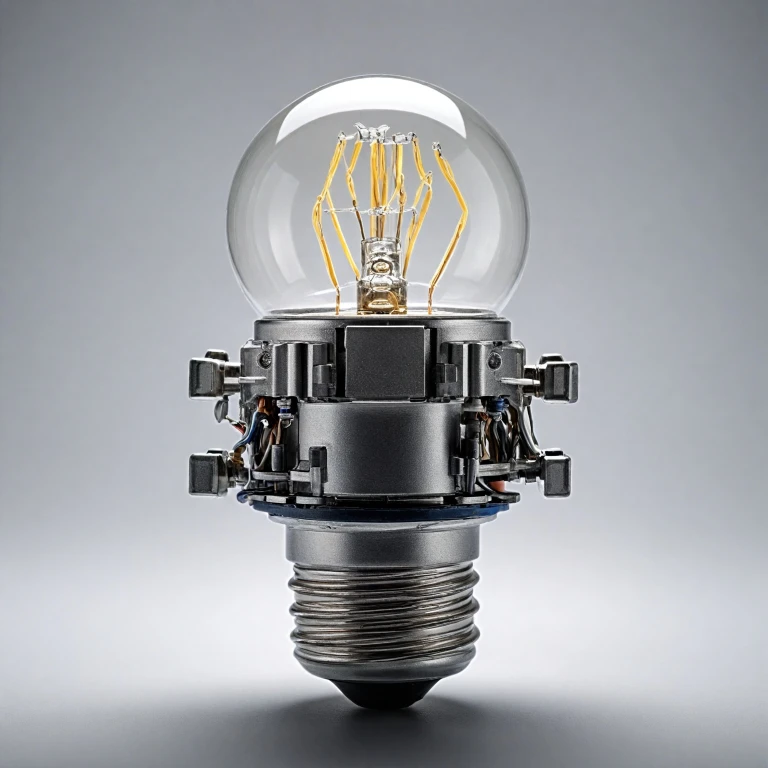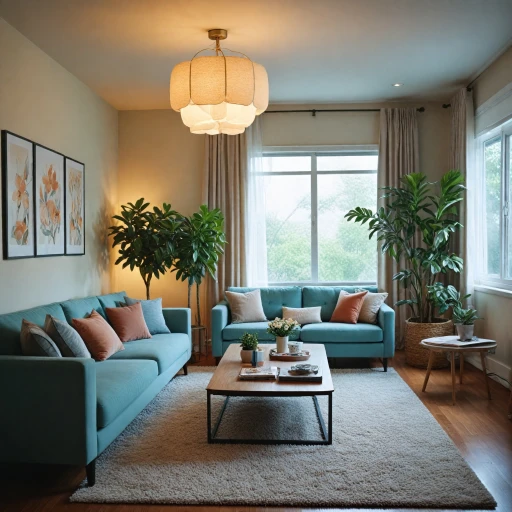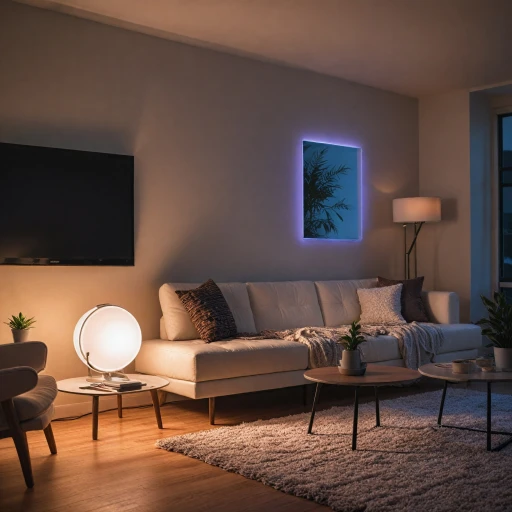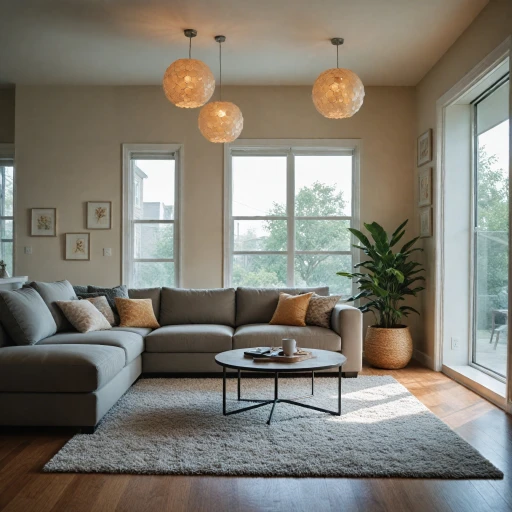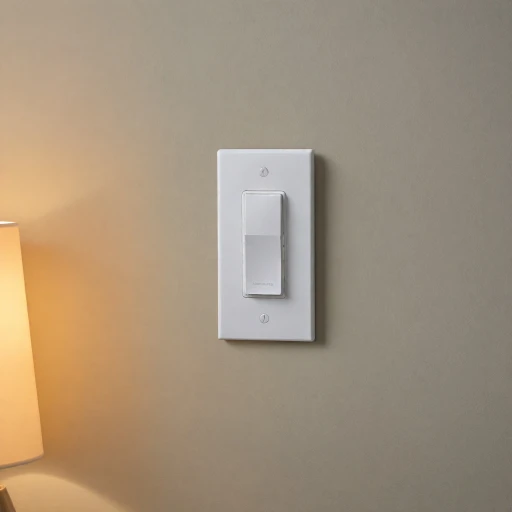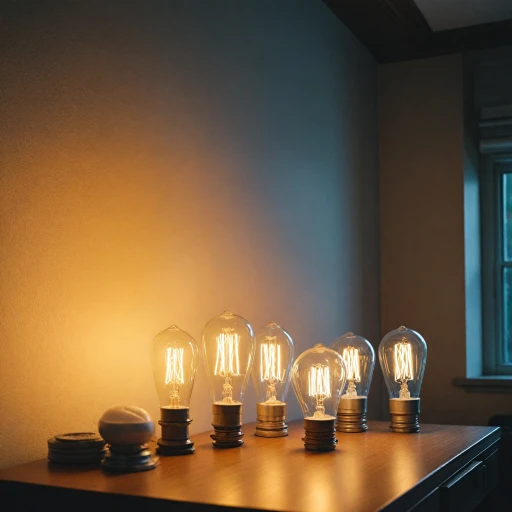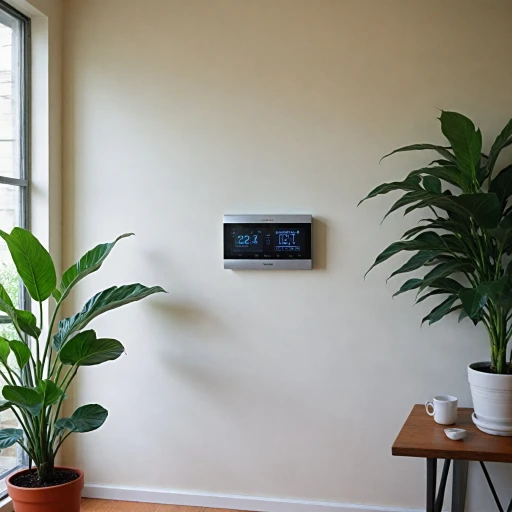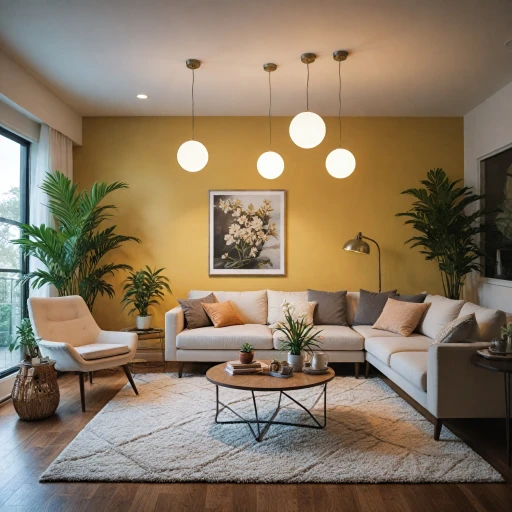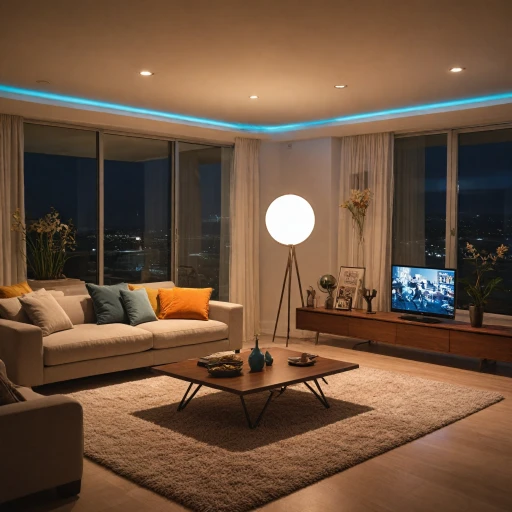
The Evolution of Light Bulb Sockets
Journey from Simplicity to Smart
The evolution of light bulb sockets has followed a fascinating trajectory, rooting itself from simple designs into today's innovative smart solutions. Initially, sockets were built purely for function, focusing on achieving a reliable connection between the bulb and the power source. Traditionally, they were made using materials like brass and porcelain, establishing durability even in high-temperature circumstances. In the earlier days, sockets served the basic purpose of holding bulbs securely in place. Medium bases, such as the familiar E26 medium base socket, were predominant fixtures in homes, pairing with your regular bulbs. These conventional solutions are still in use today, appreciated for their reliability and low unit price. Yet, alongside these, the modern palate for lighting has expanded. With technological advancements, light sockets have transformed into more than just connectors. They are now anchors for smart technology in the home. Smart lamp sockets, such as those from brands like Satco, are based on circuit turns that allow for remote control and automation features. The integration of knob sockets and pin sockets, which can adapt to various lamp types, has made smart lighting not just about illumination but also about creating ambiance and enriching user experience. A smart bulb socket doesn't just support regular bulbs; it empowers you with the ability to adjust brightness, turn knob controls, and even alter lighting colors from a pure white to a dynamic spectrum. This can transform your living space, all of which can be explored further in mastering LED light controls for a smarter home here. Ultimately, while traditional sockets still hold a firm footing due to their regular price and availability, smart light solutions lead the future with their multifaceted functionalities, increasing the appeal of energy-efficient and adjustable lighting systems.Types of Smart Light Bulb Sockets
Exploring Smart Light Bulb Socket Types
In the world of smart lighting, there are numerous socket designs tailored to meet diverse requirements. Understanding these types can be crucial in selecting the right solution for your home or office.- Standard Screw-in Sockets: These are the most commonly used, resembling traditional "Edison" medium bases. They allow easy installation of smart bulbs with different features, such as changing colors and dimming capabilities. Phenolic and brass bases are popular materials, providing durability and cost-effectiveness.
- Pin Base Sockets: Primarily used for low voltage applications, pin base light sockets offer a secure way to connect your smart lamps, often found in specialty lamps and certain smart lighting setups.
- Specialty Knob Sockets: With a built-in knob control for adjustments, these sockets offer a seamless way to directly control the brightness or color of the light without external apps.
- Porcelain and Metal Sockets: Ideal for high heat applications, these sockets provide robustness for smart lighting systems that may experience higher thermal exposure. They retain thermal stability, optimizing the light bulb functionality.
- Socket Adapters: For those not ready to fully commit to new smart bulb systems, adapters can convert regular sockets to smart-compatible ones, broadening the potential to integrate new smart lighting technologies without replacing the entire fixture.
Installation and Setup Challenges
Challenges in Setting Up and Installing Smart Lights
The charm of integrating smart lighting into your living space can easily be shadowed by the common challenges encountered during the installation and setup process. As you embark on the journey to modernizing your light sockets, it's crucial to acknowledge some important factors.
Firstly, ensuring compatibility with your existing light socket types is fundamental. Older socket designs, often made from materials like brass or phenolic, might not support newer smart bulb bases. For instance, certain medium base sockets may need a socket adapter to accommodate smart bulbs effectively. Therefore, recognizing the right configuration becomes an essential pre-installation step.
- Power and Wiring Requirements: Smart lighting systems often require a steady power source and may need rewiring of existing circuits. The installation process can demand a basic understanding of electricity, particularly when dealing with circuits and light sockets replacements.
- Networks and Connectivity: Establishing a reliable connection between your smart bulb and its controlling device can be tricky. The network strength and compatibility with different devices can impact the successful setup of the smart lighting system. Make sure your home network supports the operation of these smart bulbs.
- Physical Limitations: Installing smart light fixtures in challenging environments, such as low ceilings or recessed lighting fixtures, may require additional consideration and potential adjustments.
- Pricing and Cost Efficiency: The initial regular price of smart socket systems can be intimidating. However, sale pricing strategies and electricity cost savings in the long run often justify the investment.
Overall, successfully installing smart lights requires a balance between understanding technical aspects and practical application. Ensure you understand your existing setup's constraints and the specific installation steps for your chosen smart bulbs to avoid common pitfalls. This will foster a seamless integration of advanced lighting into your environment, thereby enhancing the modern aesthetics and functionality of your space.
Energy Efficiency and Cost Savings
Smart Lighting's Impact on Bills and Environment
Smart lighting isn't just a trend—it's a tool for achieving energy efficiency and cost savings. With varying sockets like the medium base or the metallic knob socket, consumers can find the right fit for their lighting needs that are not only energy-efficient but also keep costs low. Switching to smart bulbs and sockets can ultimately lead to significant reductions in electricity bills. Many smart light bulbs and lamp sockets, including those with phenolic or brass components, offer dimming features that enable users to reduce energy consumption by adjusting the brightness as needed. Moreover, smart lighting systems provide advanced controls via apps or voice assistants, allowing homeowners to turn lights off remotely when they’re not in use. Investing in smart lighting also often means investing in LED technology, which is known for its long lifespan and low energy usage compared to regular light bulbs. This translates to less frequent bulb replacements and thus lower maintenance costs. In terms of environmental impact, smart lighting plays a pivotal role. By opting for fixtures that utilize modern components like the porcelain socket, and by employing practices such as setting schedules via specialized apps, the overall carbon footprint is significantly reduced. Consumers considering the switch should also be aware of the initial price unit of smart sockets compared to regular ones. Though the sale price of smart bulb bases might be higher initially, the long-term savings—both financially and environmentally—often justify the investment. With options ranging from the versatile satco socket adapter to the innovative socket ring, smart lighting offers not just sustainability but also adaptability for various home settings. Whether it's a low or medium base socket for desk lamps or a comprehensive system for the entire home, the potential to save energy is immense with the right choices in smart lighting.Security and Privacy Concerns
Addressing Security and Privacy in Smart Light Systems
As we embrace the conveniences of smart lighting from enhanced efficiency to cost savings, it's crucial to address the security and privacy concerns that come with these innovations. Smart light systems, including those with advanced features such as medium base bulbs and lamp sockets with integrated technologies, inevitably become part of the Internet of Things (IoT) ecosystem. As a result, they can be potential entry points for cyber threats if not properly managed. Ensuring Security:- Secure Connections: Always connect smart light devices through a secure home network. Avoid using default settings; it’s recommended to change default usernames and passwords for all connected devices, including socket adapters and smart lamp sockets.
- Regular Updates: Keep the smart light firmware updated. Manufacturers like Satco often release updates that patch vulnerabilities and improve the overall security of their products such as satco sockets and porcelain sockets.
- Data Encryption: Ensure that all data transmitted between your smart lighting devices and their respective apps is encrypted. This applies to all connections, whether they involve a low-priced knob socket or a medium-base metal socket.
- Minimize Data Collection: Choose devices and platforms that are transparent about their data collection and allow you to minimize the amount of data collected. Be wary of systems that demand excessive information or access, even if alluring due to their regular price or sale price.
- User Permissions: Review the app permissions required by your smart lighting systems. Only grant access that is necessary for the function of your light socket control or lamp socket applications.
Future Trends in Smart Lighting
Anticipating the Next Generation of Smart Lighting Solutions
The evolution of smart socketa has been marked by unprecedented technological advancements that continue to shape the future of lighting solutions. As technology progresses, consumers can expect an array of innovative features that will redefine how low we engage with lighting systems.- Integration with Smart Home Ecosystems: The medium base bulbs of the future are poised to seamlessly integrate with smart home systems, offering greater compatibility and functionality. This evolution is set to enhance the way users interact with home lighting, drawing connections to the installation and setup challenges many have already faced.
- AI and Automation Capabilities: The infusion of artificial intelligence in smart lighting is not far-fetched. Learning circuits capable of adjusting to routines and preferences will become the norm, minimizing the need for manual adjustments. This shift underscores the importance of understanding the regular price vs. the potential long-term cost savings outlined in previous sections.
- Enhanced Energy Efficiency: Building on the energy efficiency and cost savings afforded by current satco socket systems, future technologies promise to significantly boost these benefits. Advanced materials, optimized power usage, and innovative designs will collectively reduce energy consumption.
- Refined Design Aesthetics: The future forecasts more sophisticated designs. Consumers will have access to sleek brass finishes, phenolic knobs, and metal socket rings that merge style with function, driven by market demands for units that do more than just light a room.
- Improved Security and Privacy Measures: Given the concerns around security, the future is likely to focus intensively on creating more secure smart light experiences. As discussed, privacy issues are a valid concern, but technology aims to address these while ensuring optimal functionality.
- Extended Connectivity Options: Besides Wi-Fi and bluetooth compatibility, new solutions are likely to include broader connectivity options. Such connectivity will enhance flexibility and usability, turning ordinary lamp sockets into multifunctional nodes in a sophisticated network.
